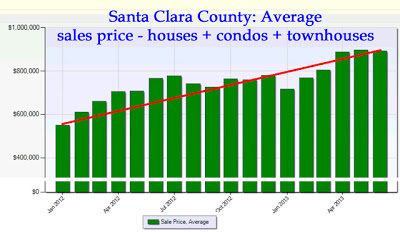 What people typically do not know is that as Realtors®, we are not allowed to answer such a question: it could be construed as discrimination. Also, the opinion about how safe an area is can be so personal and relative!
What people typically do not know is that as Realtors®, we are not allowed to answer such a question: it could be construed as discrimination. Also, the opinion about how safe an area is can be so personal and relative!I find that the best way to answer such a concern is to advise my clients to come back at different times of the day and walk around in the neighborhood, and talk with the neighbors as much as possible. I would add that I believe it is always a good idea to do so, no matter how pretty or ugly an area may look. You can learn a lot about a street, a block or a group of blocks by talking with the people living directly in the area.
 Finally one has to remember that conditions change all
the time: I live in an area that is fairly uneventful when it comes to crime,
except that in the past few weeks there have been a well publicized increase in
break-ins and thefts in that general part of Mountain View.
So the best way to answer such a question is to check for yourself with
the police department and get a crime report, to talk to the neighbors (who
will often tell you a lot about what happens nearby - and sometimes more than
you want…), and also look at some internet resources on the subject. Here are, below, some of the sites that I have come
across in the past; but I recommend to check carefully how they collect their information, and what exactly they cover and do not cover.
Finally one has to remember that conditions change all
the time: I live in an area that is fairly uneventful when it comes to crime,
except that in the past few weeks there have been a well publicized increase in
break-ins and thefts in that general part of Mountain View.
So the best way to answer such a question is to check for yourself with
the police department and get a crime report, to talk to the neighbors (who
will often tell you a lot about what happens nearby - and sometimes more than
you want…), and also look at some internet resources on the subject. Here are, below, some of the sites that I have come
across in the past; but I recommend to check carefully how they collect their information, and what exactly they cover and do not cover.
Some good
information may also be found in the local newspaper. For instance in the Mountain View
Voice under "Crime Brief" or "Police Log", and for Palo Alto "the Pulse" (PA Weekly). Each local paper has a similar section. One may need to check the evolution over a period of time to better judge a neighborhood.
Thanks for reading, as always!,
Francis
Current Mortgage rates ... Higher!!





















 Click to see larger Pix
Click to see larger Pix larger pix
larger pix











